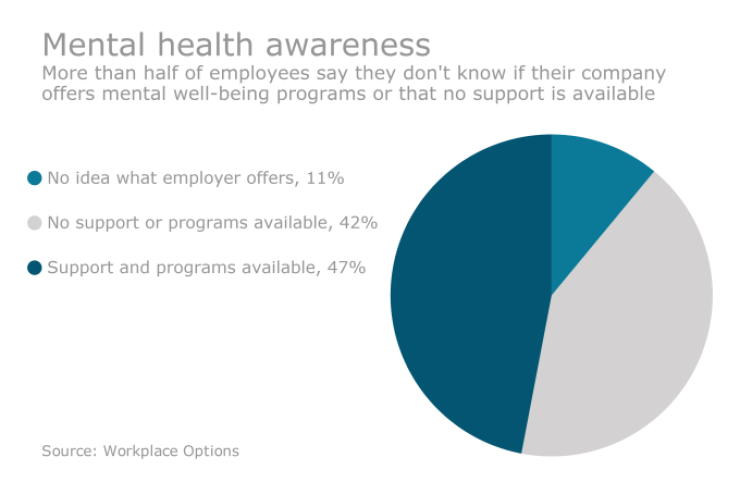It’s no secret that poor mental health impacts employee performance. Anxiety disorders, for example, affect 40 million adults in the U.S. each year, and nearly six in 10 American workers report that anxiety impacts their workplace performance, according to the Anxiety and Depression Association of America.
But because of the stigma often associated with mental health disorders, employees might not be using the benefits and programs employers have in place to help address the problem. That’s why just having programs in place isn’t enough, experts say. Instead, employers need to help remove the stigma of mental health conditions by creating a culture of inclusiveness in the workplace and forming employee resource groups.
Employers including Johnson & Johnson, Trulia and Verizon Media are doing just that, company executives said during a webinar last week hosted by the National Alliance of Healthcare Purchaser Coalitions.
When Margaux Joffe, associate director of accessibility and inclusion at Verizon Media, started working on a proposal to form a mental health-focused employee resource group (ERG), dispelling stigma and empowering workers was one of her first priorities.

“We wanted to create a paradigm shift,” she said, speaking as part of the webinar. “Growing up, you’re taught to think you’re ‘normal or not normal;’ you’re mentally ill or you’re not. We started with the idea there is no such thing as a ‘normal brain’ as we’re increasingly understanding neurodiversity in the human race.”
A lot of people with mental health issues don’t necessarily identify with the word disability, added Meredith Arthur, content marketing manager at Trulia.
“We struggled around removing the word disability because there was a desire to face the stigma and take it on,” she said of Trulia’s ERG. “Ultimately, we wanted to reach as many people as we could. We wanted to be sharper in our focus on mental health.”
Trulia expanded its ERG statement of purpose from just focusing on mental health education and awareness to advocating for the needs of different abilities.
Joffe said putting in place an ERG for mental health at Verizon was done with the support of senior leadership. “We’ve been lucky to get a lot of support from company for ERG,” she said. “A common challenge that exists across the board is lack of organization readiness.”
Readiness is a huge component of success in mental health programs, added Kelly Greenwood, founder and CEO of Mind Share, a nonprofit organization addressing the culture of workplace mental health.
“It is so important to achieve true culture change,” she said. “Oftentimes we work with leadership first and do workshops for executive teams before rolling them out to the company to really get that buy-in and understanding from the top down to build a transparent culture.”
At Johnson & Johnson, it took the company about nine months to get its ERG program up and running. “There was a lot of conversation internally if it should be its own ERG for mental health or integrated into another employee resource group,” said Geralyn Giorgio, talent acquisition change management communications and training lead at the pharmaceutical and consumer packaged goods manufacturing company.
At that time, she said, the company had an ERG called the alliance for disability leadership. The decision was made to put mental health under that ERG umbrella. “Since than happened, there were a lot of [employees] not seeing themselves in this ERG. We felt strongly we had to rebrand the ERG, and we went live last year, using the name alliance for diverse abilities to make it more inclusive,” she said.
This year, Giorgio said, the company will work to empower managers to handle mental health conversations.
“If you have a manager open to the conversation, [employees] have a different experience than someone whose manager is ill-informed,” she said. “That’s something we need to focus on this year — helping our managers feel more comfortable with having the conversation.”





